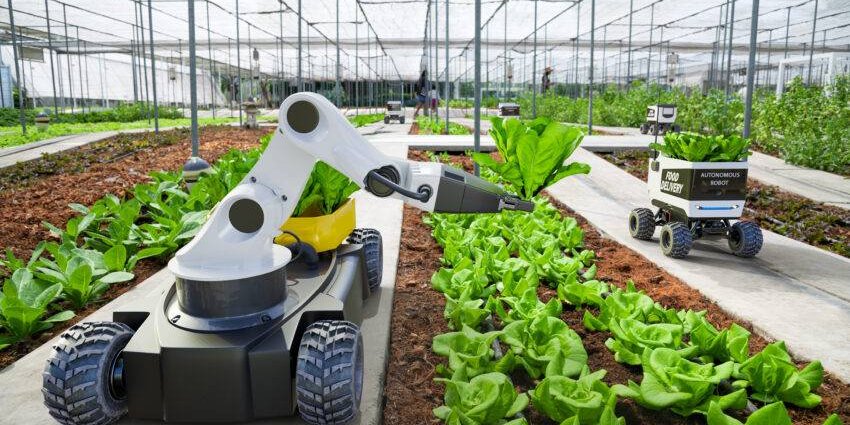Automation and robotization are no longer limited to manufacturing processes alone; modern warehouses are also embracing a plethora of new technologies.
The advent of the Internet of Things (IoT) has enabled extremely precise indoor geolocation; warehouse workers are using smart storage carts; and advanced sensors ensure the quality of stored goods. Read about warehouse automation and how it can both secure and expedite your logistic processes.
What is IoT?
IoT is an acronym that stands for the Internet of Things. The Internet of Things encompasses devices that are interconnected and remotely controlled through the internet. These devices are equipped with sensors, software, and other technologies for collecting and sharing data. Each IoT device can communicate with other similar IoT devices connected to the network. Among the most common types of IoT devices are those processing data on temperature, humidity, motion, pressure, light, gas, acceleration, or position.
What is IoT Good For?
IoT helps companies leverage remote monitoring and control systems, even in highly regulated industrial environments such as construction, manufacturing, mining, and chemical production. Logistics is no exception; the potential of IoT lies in data collection and analysis, enabling robotic process automation. IoT systems can monitor, gather, exchange, analyze, and provide new valuable insights, not only creating a necessary foundation for automation but also contributing to increased operational safety and detailed insights into resources utilized by companies, not just in logistics and warehouse management.
Warehouse Automation through IoT
IoT sensors detect changes in the physical environment and convert them into measurable data. The processed data is then transmitted to other devices or systems. Their primary benefit is that rapidly processed real-time data serves as an information fund for efficient warehouse automation.
Let’s consider some fundamental applications of warehouse and logistic process automation and robotization through IoT.
IoT Geolocation in Warehouses
Unlike GPS, IoT-enabled Real-Time Location (RTL) devices offer the capability to track positions inside buildings in real time with centimeter-level accuracy. Employees, other individuals, vehicles, and goods can be tracked. Internal navigation not only facilitates orientation but can optimize warehouse logistics processes by up to 20%, significantly increasing operational efficiency and reducing costs.
IoT Geofencing
Geofencing allows the creation of virtual fences and no-go zones. If individuals or warehouse assets enter or exit these zones, corresponding notifications are sent by IoT sensors equipped with geofencing. Consequently, IoT geofencing prevents potential accidents and theft of stored goods. According to Verisk Analytics (CargoNet), the number of thefts in warehouses in the United States and Canada increased by 20% in 2022. IoT aids in preventing thefts and expediting the resolution of stolen cargo cases.
Quality Assurance
For shipments with higher value and sensitive goods, IoT sensors with environmental monitoring capabilities provide an additional level of security. If threshold values for temperature, humidity, or other factors are exceeded, they can send an alert signal.
Warehouse Automation and Internal Logistics
IoT sensors and devices can also be integrated into forklifts and other transportation means used in warehouses. This allows for better monitoring of driver behavior or even the complete elimination of the human element by equipping the warehouse with robotic self-service carts. They are significantly efficient and safe, thanks to advanced sensors for detecting people and objects.
Don’t Wait for the Future: IoT is Today’s Reality
According to analysts from the International Data Corporation (IDC), there will be more than 55 billion connected devices on the market by 2025, with 75% of them utilizing IoT. Despite higher initial costs, automating the warehouse with IoT technologies will pay off in increased safety for people and goods and, most importantly, in more efficient utilization of internal routes and resources.











